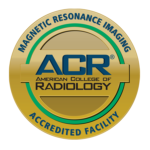At Intermountain Medical Imaging, we are constantly fielding questions from concerned patients (and provider offices) about the radiation associated with certain imaging porcedures. How is it measured? How does it affect me (or my patients)? How do I know I am (they are) in good hands? At IMI, we feel education is the key to making the right choices in health care and look to address these and many other questions for our patients and providers on the IMI blog, IMI website, and IMI Facebook page.
How is radiation dose measured?
Determining radiation dose is very complex because it is more than just measured radiation exposure. It is actually the amount of radiation absorbed by the patient. This is calculated by using many factors such as patient size, as well as formulas that are constantly changing as science and professional organizations examine past exposure and their effects. This is why any dose that is provided will be an estimate.
We are all exposed to radiation from natural sources all the time. To measure radiation dose, the unit of measurement is millisievert (mSv). The average person in the US receives about 3 mSv a year from naturally occurring materials. In simple terms, we can compare the radiation exposure from one chest x-ray as equivalent to the amount of radiation exposure one gets from our natural surroundings in 10 days.
What does this mean to me?
The decision to have an x-ray or imaging exam is a medical one, based on the benefit from the exam and the potential risk from radiation. If you have had frequent x-ray exams and change healthcare providers often, it is a good idea to keep a record of your imaging history. This will help your new provider make informed decisions regarding any additional imaging exams that you may need.
You have a choice in imaging providers, make the right one.
Medical imaging exams have been directly linked to greater life expectancy, declines in cancer mortality rates, and are generally less expensive than the invasive procedures that they replace. However, widespread use has resulted in increased exposure for Americans. Intermountain Medical Imaging is accredited by the AmericanCollege of Radiology (ACR) for all areas that are accepted for accreditation. This means we MUST and DO comply with all best practice standards.
When choosing an imaging provider, ensure that:
- Like the radiologists at IMI, be certain that the physicians reading your scan have met stringent education and training standards.
- Look for a provider that follows the ACR Appropriateness Criteria ®, which will assist them in prescribing the most appropriate imaging exam (particularly when an imaging exam that does not use radiation may be more appropriate for a given condition).
- Look for the technologists operating the equipment to be certified by the appropriate agencies.
- Be certain that the imaging equipment is surveyed regularly by a medical physicist to make certain that it is functioning properly and taking optimal images.
- Like IMI, look for a facility that supports the “as low as reasonably achievable” (ALARA) concept which utilizes the minimum level of radiation needed in an imaging exam to achieve the necessary results.
No imaging exam should be performed unless there is a clear medical benefit that outweighs any associated risk.
Post Reviewed by — T.G.; Neuroradiologist
For more information visit www.radiologyinfo.org or www.acr.org/safety
References:
American College of Radiology. White Paper on Radiation Dose in Medicine
Health Physics Society. Risk/Benefit of Medical Radiation Exposures.
Radiology Info. Radiation Exposure in x-ray examinations.

